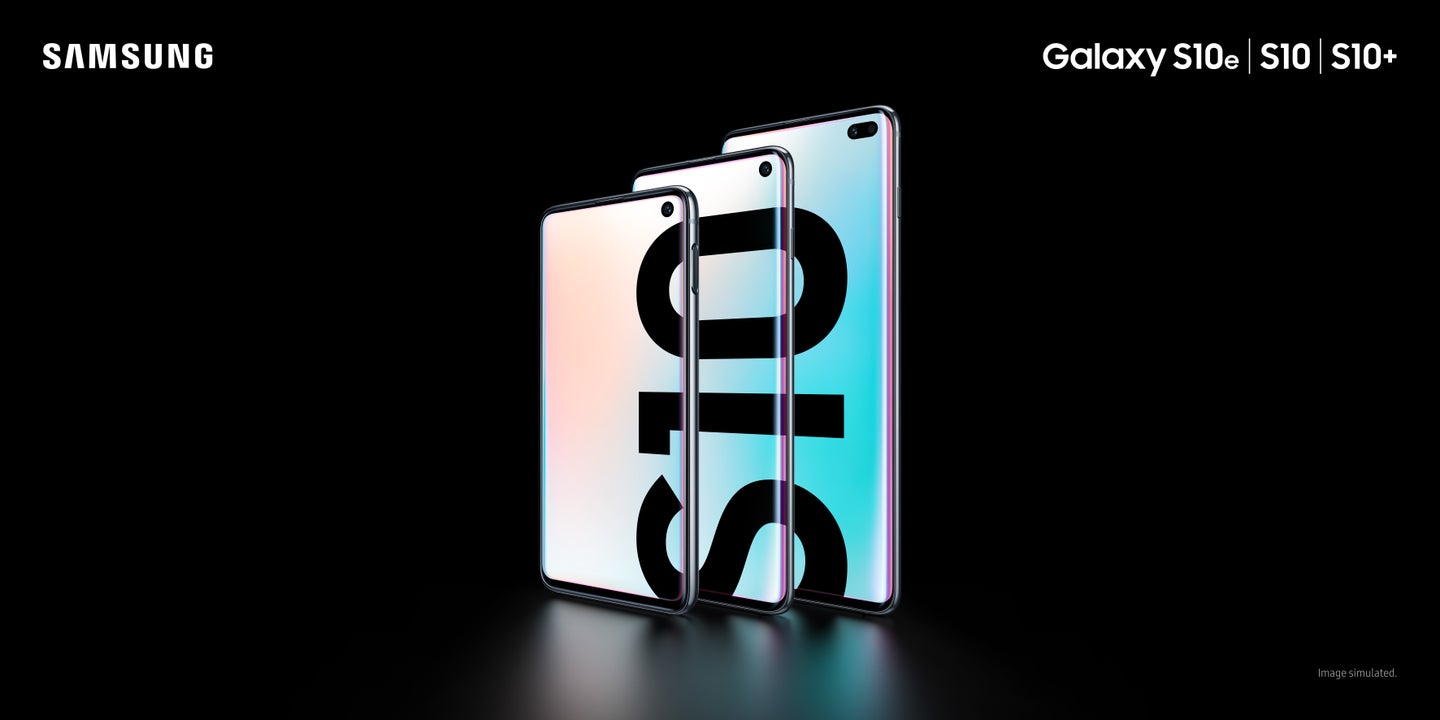How the Samsung Galaxy S10’s cool new fingerprint sensor works
It's ultrasonic!

We may earn revenue from the products available on this page and participate in affiliate programs. Learn more ›
Samsung revealed the latest generation of its Galaxy S smartphones today, a lineup of four devices packed with multiple cameras, big displays, and in one model, up to a terabyte of built-in storage. But the most interesting trick up Samsung’s metal and glass sleeve is an ultrasonic fingerprint sensor that’s built right into the display of three of these new phones. (Speaking of interesting tricks, Samsung also showed off its forthcoming Galaxy Fold phone, which, as its name implies, will have a folding screen. It will cost nearly $2,000 and be available in April.)
Any smartphone must give its users a way to unlock it, whether that’s through typing a passcode, a biometric system, or both. Current-generation iPhones have front-facing Face ID sensors, while older ones have a fingerprint reader built into the home button. Cameras and buttons, however, take up precious space, or require a notch in the display. One alternative is to put biometric sensors on the back, which is where last year’s Samsung phones, for example, had their fingerprint sensors. This year, that’s changed.
All of Samsung’s Galaxy S10 models (with the exception of the budget-minded S10 Essential) will have a fingerprint sensor hiding under their displays.

Going ultrasonic
The new fingerprint reader is “ultrasonic,” meaning that it uses sound waves to detect a three-dimensional image of your fingerprint. Those sound waves bounce off your finger and return to the phone, allowing it to see the ridges of your print as well as the depth of those valleys.
Anil Jain, a professor of computer science at Michigan State University and expert in biometrics, says that the sound waves are typically around 200 kilohertz when measuring something like a fingerprint. At higher frequencies, ultrasonic testing is used in medicine (you’ve heard of ultrasounds, no doubt), or to look for a flaw inside a metal object, like an airplane wing, Jain says.
In this case, the sensor is using sound waves to measure something it doesn’t have to penetrate deeply: your fingerprint. Samsung says that the sensor can see your print in three-dimensions. “Three-dimensional simply means that they can look at the depth of the ridges and valleys,” Jain says.
This technology is different from other kind of fingerprint sensors, which are either capacitive or optical. The older iPhones, for example, had capacitive sensors built into their home buttons. Those sensors aren’t actively emitting any kind of sound waves, but are just detecting the two-dimensional pattern of your print. A capacitive sensor, for example, is detecting the differing electrical charges caused by the height difference of the ridges and valleys as they push against the sensor, Jain says. An optical fingerprint sensor uses an image of your print.
In general, ultrasonic fingerprint sensors can have their advantages. They can sense “blood flow,” Jain says. That means that if a movie-style villain cuts off your finger and tries to use it to unlock a phone, it might not work, because your amputated digit has no more blood flowing in it. Ultrasonic sensors also do a better job of reading a fingerprint than if it is wet, dry, or dirty, than an optical or capacitive sensor, Jain says.
The only new Samsung phone not to have this sensor is the S10e, which has a capacitive fingerprint reader on the side.

What else do the new phones have?
Of course, the smartphones have all the bells and whistles you’d expect from a flagship device. The front-facing cameras are surrounded by AMOLED displays, with the holes for those sensors carved out through a precise laser-cutting process, Samsung says. The phones can be charged wirelessly, and can even produce a wireless charge to allow you to charge another device with your phone, a feature called “Wireless PowerShare.”
Like the Galaxy Note 9, the camera uses artificial intelligence to, in some cases, recognize the scene you’re shooting and customize the camera for that object or scene.
And speaking of the cameras, these phones have lots of them. On the back, all of them boast a standard wide-angle lens, as well as an “ultra wide” lens with a 123 degree field of view. All of them except the S10e also have a telephoto lens on the back, allowing up to 2x optical zoom.
The four models are the S10e, which has a display that measures 5.8 inches on the diagonal; the S10, which is 6.1 inches; the S10+, which is 6.4 inches; and finally, the S10 5G, whose displays is 6.7 inches across. Like its name implies, the Galaxy S10 5G is intended to work with the forthcoming generation of wireless networks—they’re launching it first with Verizon—and it won’t be available right away. The three other devices will be up for pre-order on February 21.
